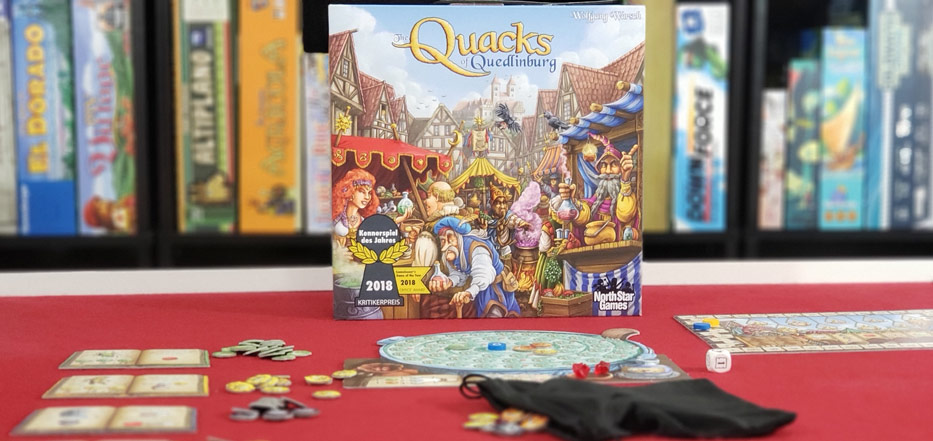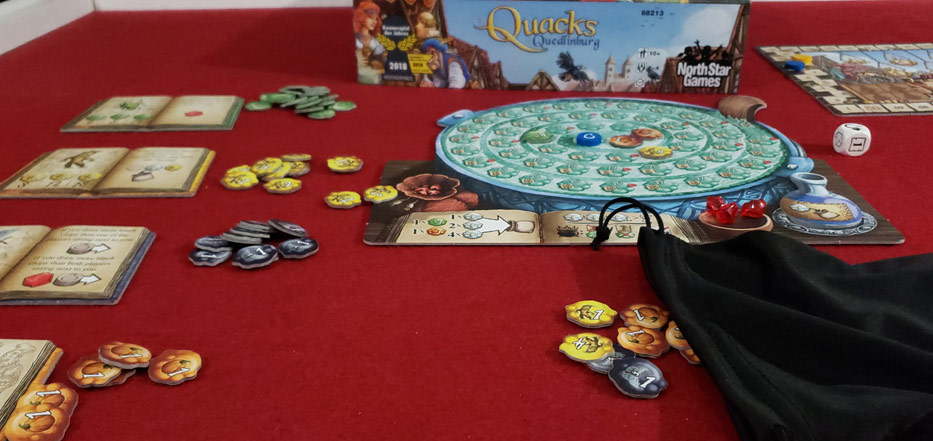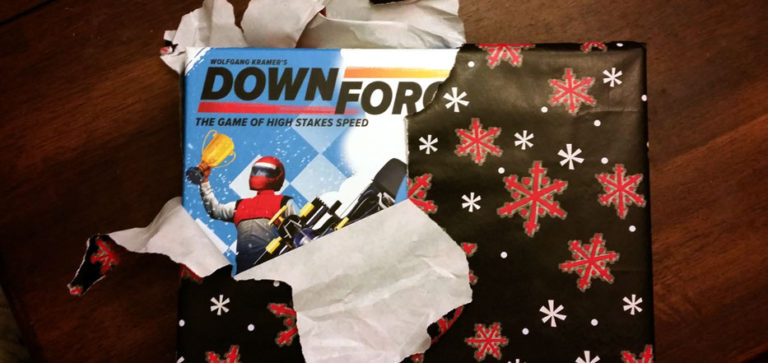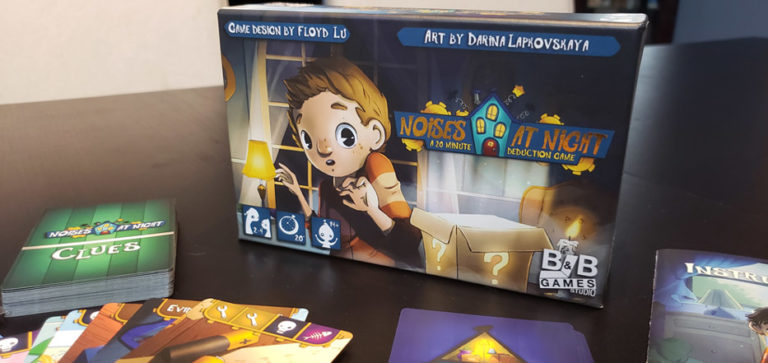
My wife loves to watch The Food Network on television, which means I watch a lot of The Food Network on television. I’ve seen my share of giant pots of boiling water. Most of the time, people are throwing in things such as potatoes, corn, crawfish, sausage, and crabs. Great, now I’m hungry. The 2018 Kennerspiel des Jahres (Connoisseur’s Game of the Year) Quacks of Quedlinburg also has a giant pot of boiling water. It feels familiar, this is good. There is one slight difference from what I am used to seeing, though. In this game, instead of delicious ingredients, I will be tossing in garden spiders, poison, toadstools, African death’s head hawkmoths, and a few other unusually non-savory ingredients, all while trying to make the best potion possible. It’s too late, I’m still hungry.
Quacks of Quedlinburg designer Wolfgang Warsch has a trove of spectacular board games under his belt, including a couple of the best roll and write games available at the moment with Ganz Schon Clever and Doppelt So Clever. Quacks of Quedlinburg is an amazing inclusion into that collection of mastermind designs.

Don’t Poison the Potion
In the game, you are playing as a doctor or a quack surgeon who attends an annual 9 day bazaar to peddle your newly crafted healing remedy. You will be drawing ingredient tokens from a bag, hoping to create the best potion without drawing enough poison to ruin it. At the end of each round, you may have a chance to purchase ingredients such as pumpkins, toadstools, and garden spiders. Once purchased, these ingredients will be placed into your bag to be potentially drawn out during the following round in a push-your-luck style mechanic. These tokens all have a unique special ability that, when drawn from your bag and placed into your potion, allow you to take other actions. These actions include things like drawing tokens to look at them first before placing them and then deciding to put them back if you don’t like them, placing tokens further along the board, and removing poison from your board. During the round, you may draw tokens as many times as you want, but your potion will explode if you draw out more poison than is allowed.
You will start the game with 7 poison tokens, 1 garden spider, and 1 pumpkin in your bag, so the odds of you pushing your luck early to make a greater potion are not very good. Your potion board is a swirling movement track upon which the ingredients will be placed. Ingredients will be placed in front of a tear drop marker that resides in your pot. It is possible for this marker to be moved forward during the game, allowing you to start drawing and placing tokens from where that marker resides. When you ultimately decide to stop, if you haven’t exploded your potion, you will most likely receive a number of victory points and money to spend. Should you happen to explode, the game is still very forgiving as it will give you a choice between taking the victory points for that round or taking the money to buy new ingredients to use for the following round.

Quacks of Quedlinburg has a massive amount of replayabilty, as each ingredient has a few unique ingredient books that come with the game. The ingredient books define the abilities that each token has in that particular game. The game offers suggestions on which ingredient books to place out to make the best combination of abilities for your game. Each ingredient has anywhere from 2 to 4 abilities but will only have 1 ability in the game based on which book you choose to play.
There is also a fortune teller deck of cards that offers extra special goodies. A card might let everyone up the poison count for the round, or take a free ingredient of your choice. There are many options in the deck. It also contains one of the niftiest catch up mechanics I have ever seen. This is to help curb with runaway victors. The scoring track contains a number of rat tails placed along its path. At the start of each round after the fortune teller card is revealed, players not in the lead can throw rat tails into their pot which will allow them to place a rat marker on their board to start in front of that instead of starting in front of the tear drop marker. Each player can determine this by counting how many rat tails are between them and the leader and then moving their rat marker that many spaces ahead of their tear drop marker.

Final Thoughts
I am completely impressed with this game, the mechanics, the fluidity, and the ease of teaching and learning. Although while out on the table is looks beautifully colorful, attention grabbing, and inviting, I will say that this has a large footprint with many small pieces. That is not always a bad thing; I just wanted to note the space it may require. And though it may fill your table, it will also fill your need for a cure all remedy for what ails you. This game is full of theme and push your luck tension combined with plenty of strategy. So I’m going to build my best potion full of spiders, and maybe a few pumpkins, because I need something to satisfy this hunger, and Quacks of Quedlinburg will cure it every time.
It’s currently tough to find a copy of Quacks of Quedlinburg. Place an order with your local game store or check out Miniature Market and Amazon for the latest printing of this great game.
Highs
- Loads of replayability
- The push-your-luck mechanic provides lots of tension
- Excellent artwork all around
Lows
- A bit of a table hog
- Feels fiddly at times because of the small tokens





[…] During the show, Bruce Voge sat down with Erin and Bob to chat about Dirty Pig and The Herb Witches, the new expansion for The Quacks of Quedlinburg. […]
[…] have been nothing short of spectacular with titles like Ganz Schon Clever, The Mind, Brikks, and Quacks of Quedlinburg. The Taverns of Tiefenthal (The Taverns of the Deep Valley) is just another notch in the great belt […]